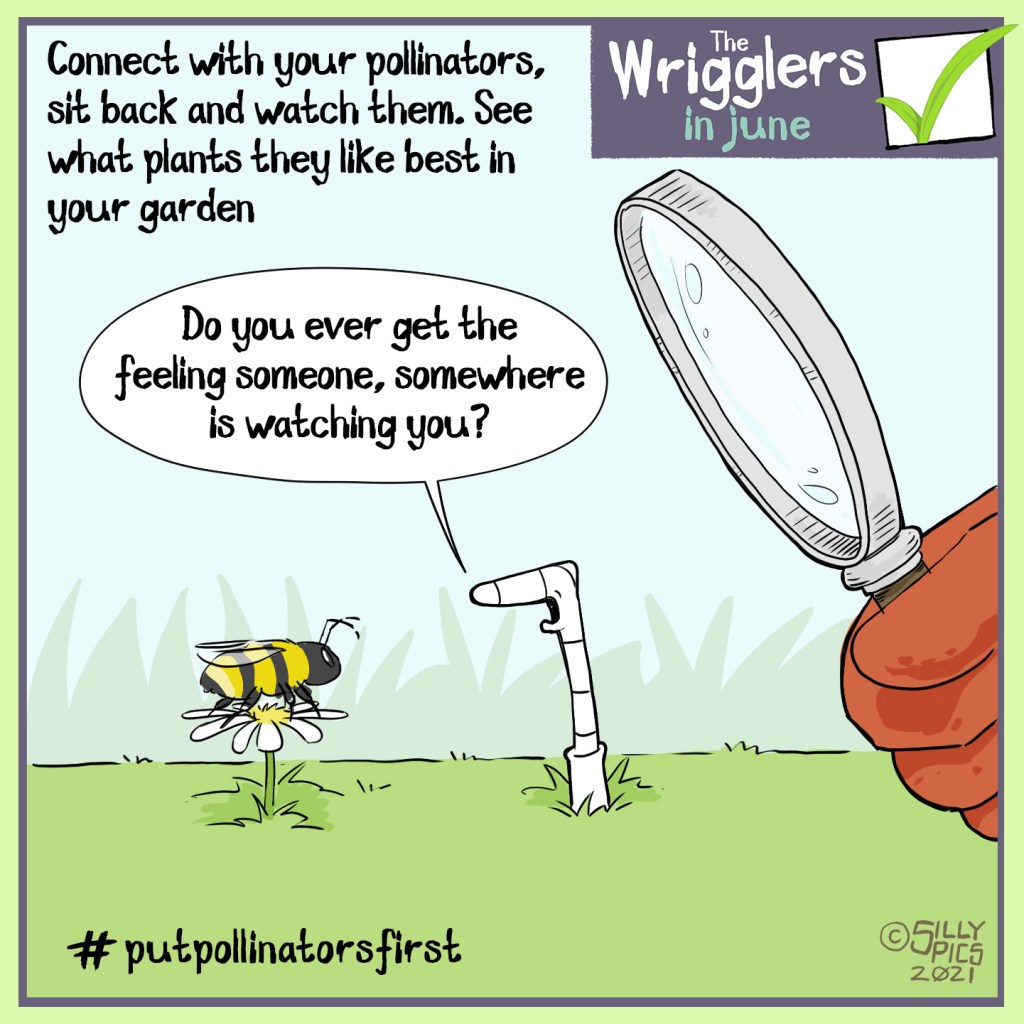The worms have spent some time thinking about watering tasks in the garden throughout July and August. Water to prevent evaporation, bolting and support the general wellbeing and growth of your precious plants. Enjoy the #cartoons and the weather, this month!
Follow our blog to get more daily gardening cartoons, ideas, daily tasks and tips of what you can do now in your #garden

[elementor-template id=”1680″]
The wrigglers are amateur gardeners, for advice from the experts on how and what to prune in July, try the following experts and links – they know what they’re talking about!
Top tips include mowing on a higher setting, collecting pots together and watering in the mornings … erratic watering can cause issues, too. Blossom end rot on tomatoes, for example.
Watering tips from the RHS
Watering is key to growing plants well, so here we look at how to get it just right. This not only means providing the water our gardens need, but using it wisely. Water is a precious resource and supplies in the UK are under pressure from the effects of climate change, population increase and the need to protect the environment, such as river levels for wildlife.
What to prune in summer from Gardener’s World
Pruning plants in summer is just as important for some plants as winter pruning.
By pruning in summer, you can reap the rewards of better displays from ornamental plants. You’ll also encourage bigger crops from fruit trees and bushes.

The Wrigglers have joined the #putpollinators first Campaign
Wild flower meadows flower for longer due to the diverse range of plants in them. That’s more flowers for you, and more food for the bees and insects. Plant one and join the Gardener’s World Put Pollinators First campaign – raising awareness of the decline of our pollinators @GWmagazine
Click to see our ‘Put Pollinators First’ page
Gardener’s world launched its #putpollinatorsfirst campaign, as part of their 30th Anniversary celebrations of BBC Gardeners’ World Magazine. See what you can do to play your part:
Join in the Gardener’s World team and pledge here
With a panel of pollinator experts, committed to helping bees and other pollinating insects to thrive, Dr Trevor Dines says, ” Since the 1930’s, over 97 percent of our wildflower meadows have been destroyed. That’s 7.5 million acres, gone. Now you can understand why our pollinators are in such trouble.”
There are 3 ideas:
Sow some pollinator meadow seeds
Create habitats for butterflies, moths and caterpillars
By making a meadow, even on a small scale, we can provide a banquet for pollinators that’ll help them to thrive.
Here are some seed suppliers and links:
Thomson and Morgan – how to sow wildflower seeds
RHS – How to grow a mini wild flower meadow
More from the worms
Year-round garden pruning guide
Great advice and full of quick and simple tips too, for example … don’t cut into tender plants or evergreens right now as their top growth provides insulation from penetrating cold.
[elementor-template id=”1721″]
#trees #rhubarb #compost #composting #greenwaste #brownwaste #flower #nature #gardening #garden#art #wildlife #cartoons #thewrigglers
@GardenOrganicUK
@The_RHS
@RHSBloom
@RHSSchools
#garden @The_RHS
#gardener#gardens#instagarden#gardeningtherapy#gardenerslife#instagardeners#gardenlovers#ediblegarden#urbangardener#growfoodnotlawns
@AmateurGardeningMagazine @GardenNewsOfficial @mr_plantgeek
